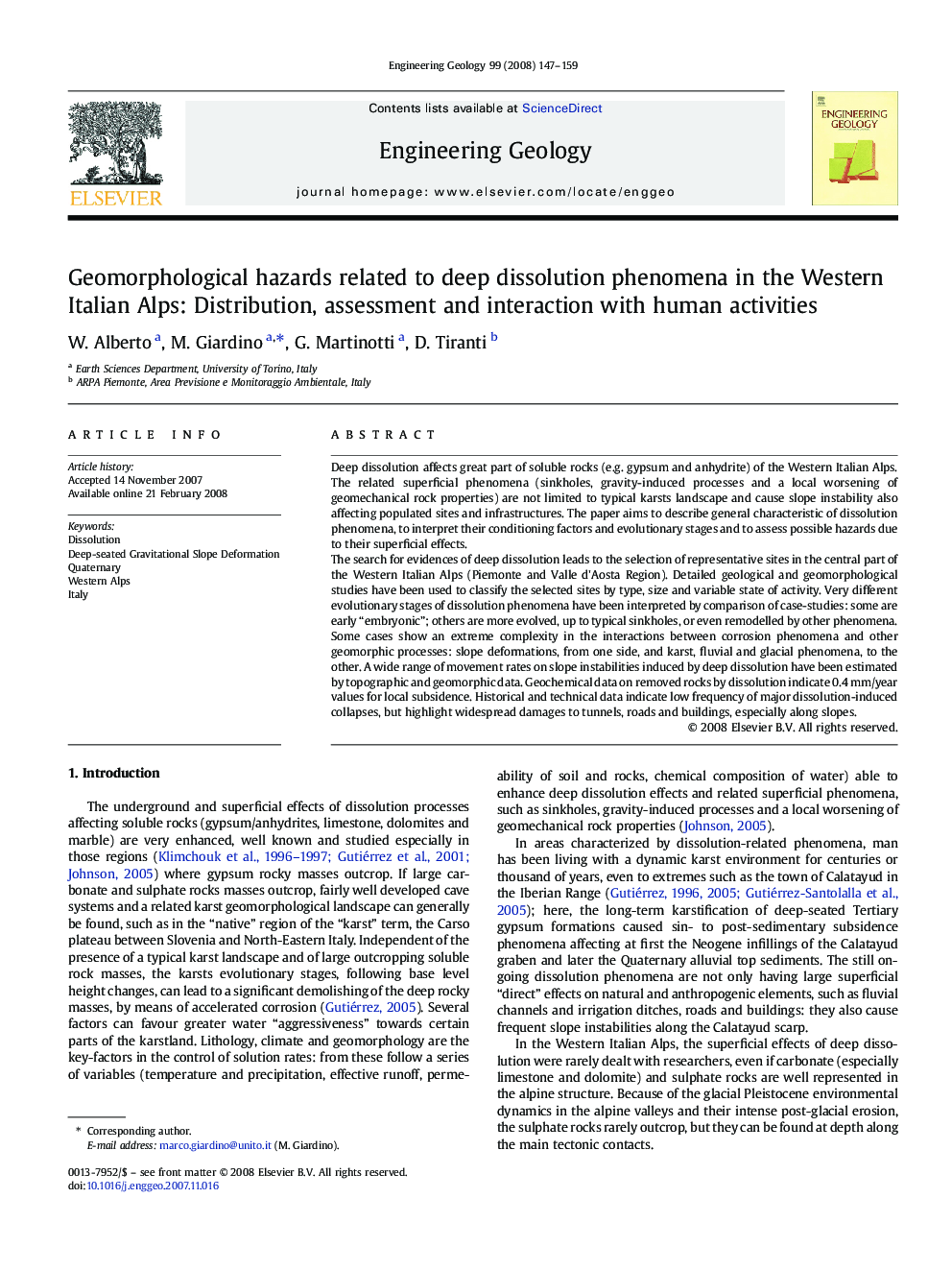| Article ID | Journal | Published Year | Pages | File Type |
|---|---|---|---|---|
| 4744785 | Engineering Geology | 2008 | 13 Pages |
Deep dissolution affects great part of soluble rocks (e.g. gypsum and anhydrite) of the Western Italian Alps. The related superficial phenomena (sinkholes, gravity-induced processes and a local worsening of geomechanical rock properties) are not limited to typical karsts landscape and cause slope instability also affecting populated sites and infrastructures. The paper aims to describe general characteristic of dissolution phenomena, to interpret their conditioning factors and evolutionary stages and to assess possible hazards due to their superficial effects.The search for evidences of deep dissolution leads to the selection of representative sites in the central part of the Western Italian Alps (Piemonte and Valle d'Aosta Region). Detailed geological and geomorphological studies have been used to classify the selected sites by type, size and variable state of activity. Very different evolutionary stages of dissolution phenomena have been interpreted by comparison of case-studies: some are early “embryonic”; others are more evolved, up to typical sinkholes, or even remodelled by other phenomena. Some cases show an extreme complexity in the interactions between corrosion phenomena and other geomorphic processes: slope deformations, from one side, and karst, fluvial and glacial phenomena, to the other. A wide range of movement rates on slope instabilities induced by deep dissolution have been estimated by topographic and geomorphic data. Geochemical data on removed rocks by dissolution indicate 0.4 mm/year values for local subsidence. Historical and technical data indicate low frequency of major dissolution-induced collapses, but highlight widespread damages to tunnels, roads and buildings, especially along slopes.
